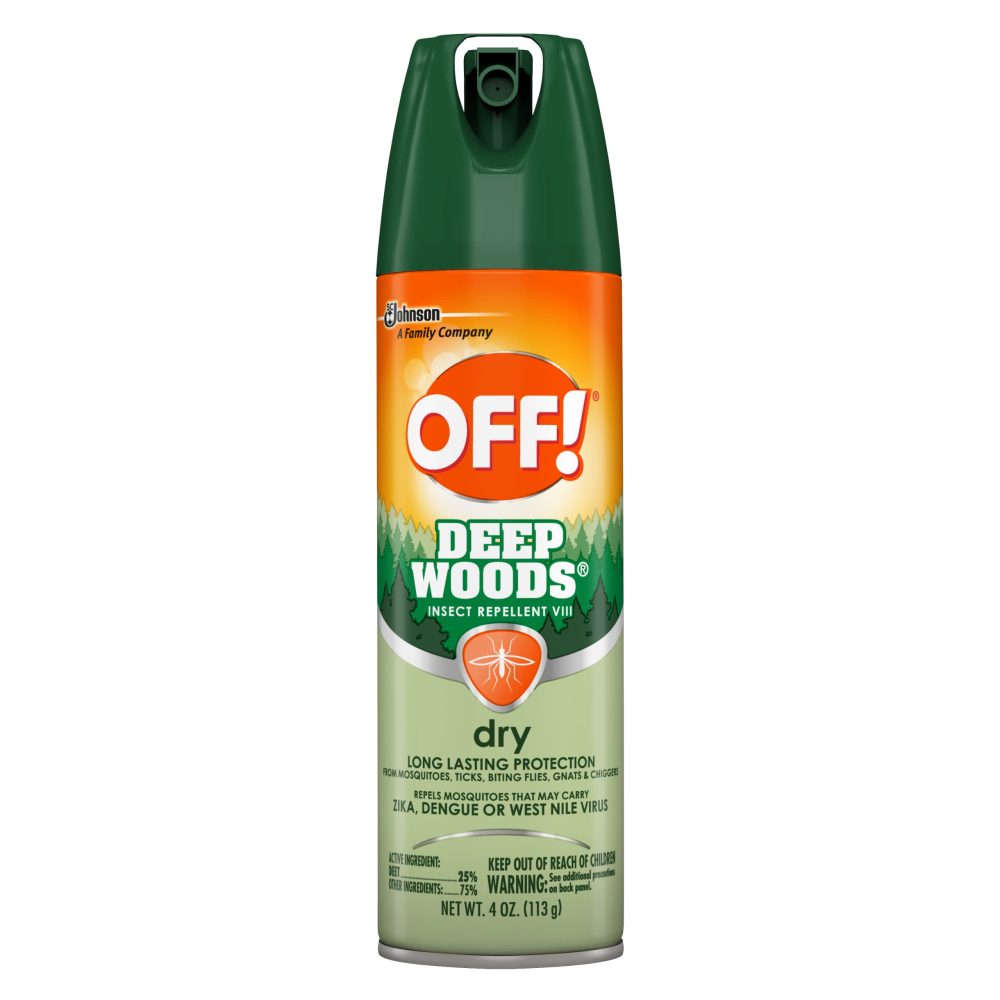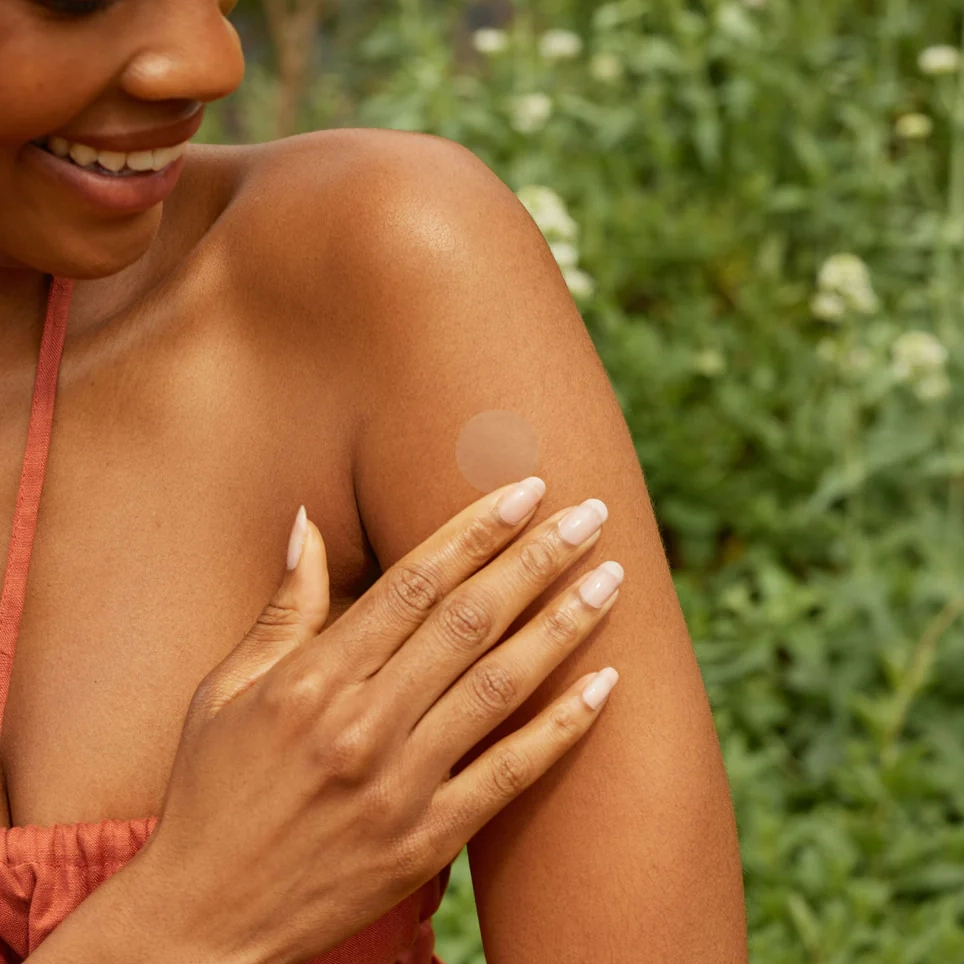
[ad_1]
The warmth of Summer season is most individuals’s favourite time of the yr, however on the flip facet, it additionally brings peak mosquitos and ticks; oh my! One other downside is, like most different merchandise, the bug sprays available on the market are tremendous poisonous, loaded with dangerous chemical substances like DEET, which, when studied, has been proven to trigger mind cells to die!? I don’t find out about you, however I’d fortunately take some bug bites over killing mind cells, so right this moment, Natural Bunny is breaking down DEET, why it’s so poisonous, and what safer choices I like to recommend as a substitute! So, what’s the greatest pure bug spray, you say? Let’s go!
What Is DEET Precisely?
DEET, or N, N-Diethyl-meta-toluamide (also called diethyltoluamide), is essentially the most generally used energetic ingredient to repel disease-carrying bugs and ticks and is utilized in bug sprays, lotions, and sticks. DEET was initially developed in 1944 by the U.S. Division of Agriculture, for the Military, initially examined as a pesticide in farming, later used within the army to repel bugs, after which, lastly registered for most people to make use of as a bug repellent in 1957.
Again in 1942, the opposite bug repellents available on the market solely repelled for about 2 hours so a USDA lab got down to create one thing with higher outcomes for the army who wanted longer protection for as much as 10 hours.
DEET is designed to be utilized on to the pores and skin and makes it laborious for biting bugs to scent us. In line with OFF! DEET interferes with neurons and receptors on the mosquito’s antennae and mouth-parts that detect chemical substances corresponding to lactic acid and carbon dioxide and don’t kill bugs. When utilized accurately, DEET types a vapor barrier on the pores and skin floor that deters mosquitoes from touchdown on the pores and skin. This implies to work; you will need to cowl your total physique with the DEET. The U.S. EPA estimates that roughly 1/3 of the U.S. inhabitants makes use of DEET annually.
Causes to Keep away from DEET-
Sadly, DEET could be extremely poisonous for a variety of causes as a result of it may enter our system in a wide range of methods. We are able to inhale it, it may be utilized to the pores and skin, fumes can contact the eyes, and it the fumes may even be swallowed whether it is utilized to arms and you then eat after. One other concern is that when utilized to the pores and skin, researchers did discover that DEET was absorbed into the pores and skin.
Many individuals are additionally making use of these bug sprays to small, weak youngsters’s our bodies. There are numerous guidelines and rules for utilizing DEET on youngsters, which alone present what a threat this ingredient is. DEET additionally, as soon as sprayed into the atmosphere, contaminates our air, soil, and water. Researchers additionally questioned what impact DEET would have as soon as positioned into water with fish. For freshwater fish and bugs, DEET was poisonous at excessive ranges, ensuing within the dying of the fish.

What Are the Dangers of DEET?
- DEET is a identified irritant and might trigger redness, blisters, swelling, rashes, and extreme pores and skin reactions, in addition to numbness of affected areas [1].
- It might probably trigger eye irritation and extra tearing [2].
- DEET can cross the placenta when utilized by pregnant ladies. Researchers studied ladies of their second and third trimesters utilizing a 20% DEET product utilized to their legs and arms. They discovered that the DEET had crossed the placenta as a result of it was present in 8% of the twine blood samples [3].
- Publicity to DEET may cause mind cells to die after extended use. A 2001 examine out of Duke College on grownup rats discovered that day by day publicity to DEET for a interval of 60 days result in cell dying. This scientist’s analysis concluded that heavy publicity to DEET can even trigger reminiscence loss, headache, fatigue, muscle and joint ache, and shortness of breath [4, 5]. All to repel bugs? Sufficient mentioned!
- DEET can dissolve plastics and different artificial supplies [6].
- In line with a 1998 EPA analysis, there have been between 14 and 46 seizures, together with 4 deaths, related to DEET since 1960 [7].
- A Swedish examine discovered males who used insect repellent for 115 or extra days confirmed an elevated threat of creating testicular most cancers. A majority of the repellents used contained DEET [8].
- Within the mid-Eighties, six ladies between the ages of 1 and eight, have been reported as having developed encephalopathy following publicity to DEET; three of those ladies died [9]. One other evaluation of accessible literature reviews 17 circumstances of encephalitis following using DEET in youngsters beneath 16 years outdated [10].
- One examine confirmed that when pregnant rats have been uncovered to DEET at excessive ranges, their infants have been born underweight. Among the many maternal rats being studied, two died from publicity to the DEET [11].
- A 2020 examine linked DEET publicity in ladies in the course of the preconception interval to a malformation that may happen within the mind [12].
What Ought to You Use As an alternative?
Most individuals actually dislike being attacked by bugs, so I really feel ya, we’d like one thing, so, what can we use that comes with fewer dangers however that’s nonetheless as efficient!? Let’s focus on!
Oil of Lemon Eucalyptus (OLE)
The extract from the leaves of the lemon eucalyptus tree is the simplest and well-established pure various to DEET. OLE is the waste product left behind in the course of the distillation course of that creates lemon-eucalyptus important oil. OLE has been discovered to successfully repel bugs between 2 and 12 hours, relying on the focus. A latest shopper reviews examine discovered merchandise containing 30% OLE to be efficient between 5 and seven hours [5]. These findings are according to the effectiveness of DEET, and, curiously, have proven to be simpler as a tick protectant than DEET [6]. OLE is completely different from lemon eucalyptus important oil, which shouldn’t be used as a repellent! Be aware, it shouldn’t be used on youngsters beneath 3 years of age, as a result of a threat of eye irritation.
Store Among the many Flower’s Insect Defend or Candle, or Wild June as each include OLE!
Soybean Oil
Soybean oil is protected to make use of on infants and youngsters and offers 1 to eight hours of safety when utilized on to the pores and skin. USDA researchers performed a examine utilizing a product containing 2% soybean oil, which relying on the species of mosquito, successfully repelled between 5 and eight.5 hours [7]. A second examine discovered soybean oil to successfully repel mosquitos for about 1.5 hours [8].
Neem Oil
Neem oil, derived from the neem tree, has an extended historical past of being utilized in Ayurvedic drugs and is taken into account a protected, pure remedy for a lot of illnesses. Some analysis exhibits bite-reduction charges of solely 25% for as much as 2 hours, however discipline research point out neem can shield between 81-91% for as much as 12 hours [9]! Whereas the jury should be out on this one, it does look promising!
Store Athar’a Pure’s Neem Oil; it is a nice choice to be used wherever on the physique.
Catnip Oil
A member of the mint household, this feline favourite can be an EPA-registered authorised mosquito repellent. Research present catnap deters pests for as much as 7 hours and is a simpler spatial repellent, with some analysis even displaying it to be 10x simpler than DEET [10, 11].
Attempt the Wilderness Maven Insect Repellant Balm that comprises Catnip Oil, Citronella, and extra!
Citronella
Derived from crops, it is a lemon-scented oil that can be utilized topically or in candles to repel mosquitoes. It requires extra frequent software to be thought of an efficient remedy. One examine discovered citronella to be 97.9% efficient upon software, 71.4% efficient at 1 hour, and 57.7% efficient by 2 hours [12]. Different research present that citronella used together with vanillin can successfully repel as much as 3 hours [13]. As a result of citronella may cause pores and skin sensitivity, it is strongly recommended to make use of in concentrations that don’t exceed 10%, additionally noting that EPA-registered merchandise include 5% or much less.
Store the Good Flower Farm or Kinfield Bug Spray that comprises Citronella and different repelling important oils! I even carry Mosquito Repelling Wipes!
Important Oils
Quite a lot of important oils corresponding to lavender, thyme, eucalyptus, rosemary, and tea tree additionally show to be efficient repellents. Analysis information exhibits these oils have safety charges that vary from 91% to 95% [14, 15].With so many safe-for-you alternate options, there is no such thing as a must threat exposing your self to the potential dangers related to DEET.
Try the Natural Bunny retailer for all of my favourite DEET-free choices after which, inform a good friend!
Sources:
[1] https://pubmed.ncbi.nlm.nih.gov/11693870/
[2] Bell JW, Veltri JC, Web page BC. Human Exposures to N,N-diethyl-m-toluamide Insect Repellents Reported to the American Affiliation of Poison Management Facilities 1993-1997. Int. J. Toxicol. 2002, 21 (5), 341-352.
[3] https://pubmed.ncbi.nlm.nih.gov/11693870/
[4] Abu-Qare, Aqel W. and Mohamed B. Abou-Donia. 2001. DEET (N,N-Diethyl-m-Toluamide) alone and together with permethrin elevated urinary excretion of 6B-hydroxycortisol in rats, a marker of hepatic cyp3a induction. Journal of Toxicology and Environmental Well being 64:373-384.
[5] Abu-Qare, Aqel W. and Mohamed B. Abou-Donia. 2001. Mixed publicity to DEET (N,N-Diethyl-m-Toluamide) and permethrin-induced launch of rat mind mitochondrial cytochrome c. Journal of Toxicology and Environmental Well being 63:243-252.
[6] Technical Information No. 36: Private Protecting Measures In opposition to Bugs and Different Arthropods of Navy Significance; Protection Pest Administration Data Evaluation Heart (DPMIAC), Armed Forces Pest Administration Board (AFPMB): Washington, DC, 2002; pp 21-25.
[7] https://www3.epa.gov/pesticides/chem_search/reg_actions/reregistration/red_PC-080301_1-Apr-98.pdf
[8] https://www.spandidos-publications.com/ijo/13/6/1299
[9] https://www.ncbi.nlm.nih.gov/pmc/articles/PMC4041896/#B8
[11] https://pubmed.ncbi.nlm.nih.gov/7958564/
[12] https://ehjournal.biomedcentral.com/articles/10.1186/s12940-020-00611-z
[14] Lee, Mi. Important oils as repellents in opposition to arthropods. BioMed Analysis Int. 2018; Vol 2018 ID 6860271.
[15] Barnard, D.R. and R. Xue. 2004. Laboratory analysis of mosquito repellents in opposition to Aedes albopictus, Culex nigripalpus, and Ochlerotatus triseriatus (Diptera: Culicidae). J. Med. Entomol. 41(4):726-730.
[16] Fradin, M.S. and J.F. Day. 2002. Comparative efficacy of insect repellents in opposition to mosquito bites. N. Engl. J. Med. 347:13-18.
[17] https://pubmed.ncbi.nlm.nih.gov/8936291/
[18] https://educational.oup.com/jme/article/42/3/306/848716?login=false
[19] https://www.sciencedaily.com/releases/2001/08/010828075659.htm
[20] https://www.ncbi.nlm.nih.gov/pmc/articles/PMC4617422/
[21] https://onlinelibrary.wiley.com/doi/full/10.1111/j.1365-3156.2011.02781.x
[22] https://pubmed.ncbi.nlm.nih.gov/12542193/ [23] https://onlinelibrary.wiley.com/doi/full/10.1111/j.1440-6055.2009.00736.x
[ad_2]
